- No products in the cart.
Plavix tabs n / a film about 75mg 100 pieces
Etamsylate Injection 125mg / 2ml amp ml 10 units
$2.49
Heparin solution and / I / / n / k 5000me / ml 5ml vial 5 pcs
$15.99
$73.53
Plavix tabs n / a film about 75mg 100 pieces
Description
Composition
Active substance:
1 tablet contains: clopidogrel hydrogensulfate in form II – 97,875 mg (converted to clopidogrel – 75.0 mg) ;.
Excipients:
Mannitol – 68.925 mg macrogol 6000 – 34 mg, micro-crystalline cellulose (low water content, 90 micron) – 31.0 mg low substituted giproloza – 12,9 mg Hydrogenated castor oil – 3.3 mg. Film coating: Opadry Pink * – 7.5 mg, carnauba wax – traces. * – Opadry Pink contains lactose monohydrate, hypromellose, titanium dioxide (E 171), triacetin, iron oxide red dye (E 172).
Description:
Round, slightly biconvex, film-coated pink engraved “75” on one side and «I I7I» on the other side.
Product form:
Tablets, film-coated, 75 mg. At 7, 10 or 14 tablets in a blister made of PVC / PVDC and aluminum foil or PA / Al / PVC and aluminum foil. 1, 2, or 3 to 7 or blister 14 tablets; 1, 2, 3 or 10 blisters with 10 tablets together with instructions for use in a cardboard box.
Contraindications
Hypersensitivity to clopidogrel or any of the excipients of the drug.
Severe hepatic insufficiency.
Acute bleeding, e.g., hemorrhage from peptic ulcer or intracranial hemorrhage. Rare hereditary galactose intolerance, lactase deficiency and malabsorption glyukozogalaktoznaya. Pregnancy and breast-feeding.
Children under 18 years of age (safety and efficacy have not been established).
Carefully
At moderate hepatic failure, at which possible predisposition to bleeding (limited clinical experience).
In renal failure (limited clinical experience).
In diseases in which there is a predisposition to bleeding (especially gastrointestinal or intraocular), especially while the use of drugs that can cause damage to the mucous membrane of the gastrointestinal tract (such as acetylsalicylic acid [ASA] and non-steroidal anti-inflammatory drugs [NSAIDs]).
In patients who have an increased risk of bleeding: due to trauma, surgery or other pathological conditions and in patients treated with ASA, heparin, warfarin, inhibitors of glycoprotein IIb / IIIa, NSAIDs, including selective inhibitors of cyclooxygenase 2 (COX-2), or selective serotonin reuptake inhibitors (SSRIs).
In patients with low activity of isoenzyme CYP2C19.
When specifying a history of hematologic and allergic reactions to other thienopyridines (such as ticlopidine, prasugrel) (possibility of cross-allergic and hematological reactions).
When newly migrated transient ischemic attack, or ischemic stroke (in combination with ASA).
Dosage
75 mg
Indications
Prevention of atherothrombotic complications in adult patients with myocardial infarction (a prescription from a few days up to 35 days), ischemic stroke (from 7 days prescription of up to 6 months) or diagnosed with peripheral arterial occlusive disease; adult patients with acute coronary syndrome: – segment elevation ST (unstable angina or myocardial infarction without tooth Q), including patients who underwent stenting with percutaneous coronary intervention (in combination with acetylsalicylic acid); – c-segment elevation ST (acute myocardial infarction) with drug treatment and the possibility of thrombolysis (in combination with acetylsalicylic acid).
Prevention of atherothrombotic and thromboembolic events, including stroke, atrial fibrillation (atrial fibrillation) in patients with atrial fibrillation (atrial fibrillation), which have at least one risk factor for vascular events can not take oral anticoagulants and have a low risk of bleeding ( in combination with acetylsalicylic acid).
Interaction with other drugs
Warfarin: although clopidogrel 75 mg / day did not alter the pharmacokinetics of warfarin (a substrate isoenzyme of CYP2C9) or INR (international normalized ratio) in patients receiving long-term warfarin therapy, concomitant use of clopidogrel increases the risk of bleeding because of its independent additional effects on blood clotting. Therefore, care should be taken while taking warfarin and clopidogrel.
Blockers IIb / IIIa-receptor: blockers IIb / IIIa-receptor in conjunction with clopidogrel requires caution in patients who have an increased risk of bleeding (trauma and surgery or other pathological conditions) (see “Special Instructions” section.). ACK: ACK serves inhibiting ADP-induced platelet aggregation effect of clopidogrel, clopidogrel but potentiates the effect of ASA on platelet aggregation kollagenindutsiruemuyu. However, simultaneous with clopidogrel receiving ACK 500 mg 2 times a day for 1 day did not cause a significant increase in bleeding time caused by clopidogrel reception. Between clopidogrel and ASA possible pharmacodynamic interaction, which leads to increased risk of bleeding. Therefore, when simultaneous application of caution, although clinical trials of patients received a combination therapy with clopidogrel and ASA up to one year.
Heparin: according to a clinical study conducted in healthy individuals, while taking clopidogrel did not need to change the dose of heparin and did not change its anticoagulant effect. The simultaneous use of heparin did not alter the antiplatelet effect of clopidogrel. Between Plavix and heparin possible pharmacodynamic interactions, which may increase the risk of bleeding, so simultaneous use of clopidogrel and heparin requires caution.
Thrombolytics: joint application of the safety of clopidogrel, fibrin or fibrinspetsificheskih nonspecific thrombolytic agents and heparin has been studied in patients with acute myocardial infarction. The incidence of clinically significant bleeding were similar to that observed in the case of joint use of thrombolytic agents and heparin with ASA.
NSAIDs: in a clinical study conducted in healthy volunteers, the combined use of clopidogrel and naproxen increased hidden blood loss through the gastrointestinal tract. However, due to the lack of research on the interaction of clopidogrel with other NSAIDs, it is not known the time, whether there is an increased risk of gastrointestinal bleeding when taking clopidogrel with other NSAIDs. Therefore, the use of NSAIDs, including COX-2 inhibitors in combination with clopidogrel, should be done with caution (see. “Special instructions” section).
SSRIs: since SSRIs disrupt platelet activation and increase the risk of bleeding, the simultaneous use of SSRIs with clopidogrel should be used with caution.
Other drug interactions
With strong and moderate inhibitors isoenzyme CYP2C9: because clopidogrel is metabolized to form its active metabolite partially by isoenzyme CYP2C19, use of drugs that inhibit this isoenzyme may lead to a decrease in the formation of the active metabolite of clopidogrel. The clinical significance of this interaction is not established. As a precaution to avoid the simultaneous application of clopidogrel and strong or moderate inhibitors isoenzyme CYP2C9. Strong and moderate CYP2C9 isozyme inhibitors are omeprazole, esomeprazole, fluvoxamine, fluoxetine, moclobemide, voriconazole, fluconazole, ticlopidine, ciprofloxacin, cimetidine, carbamazepine, oxcarbazepine, chloramphenicol.
To avoid the simultaneous application of clopidogrel proton pump inhibitors, which are strong or moderate inhibitors isoenzyme CYP2C19 (e.g., omeprazole, esomeprazole) (see. The section “Pharmacokinetics subsection Pharmacogenetics”, see “Special instructions”). If the proton pump inhibitors should be administered simultaneously with clopidogrel, use of proton pump inhibitor with the smallest isoenzyme inhibition CYP2C19, such as pantoprazole and lantoprazol.
Several clinical studies have been conducted with clopidogrel and other, simultaneously-drugs, to study possible pharmacodynamic and pharmacokinetic interactions, which showed that: the clopidogrel together with atenolol, nifedipine or both of these drugs taken simultaneously, clinically significant pharmacodynamic interaction was not observed; simultaneous administration of phenobarbital, cimetidine and estrogens had no significant effect on the pharmacodynamics of clopidogrel; pharmacokinetic parameters of digoxin and theophylline have not changed in their joint application with clopidogrel; Antacids do not reduce the absorption of clopidogrel; phenytoin and tolbutamide can be safely used in conjunction with clopidogrel (study CAPRIE). It is unlikely that clopidogrel may affect the metabolism of other drugs, such as phenytoin and tolbutamide and NSAIDs are metabolized via CYP2C9 isozyme family of cytochrome P450. ACE inhibitors, diuretics, beta-blockers, blockers “slow” calcium channels, hypolipidemic agents, coronary vasodilators, hypoglycemic agents (including insulin), antiepileptic agents, hormone replacement therapy and blockers GPIIb / IIIa-receptors: clinical studies have not it was clinically significant adverse interactions.
Overdose
Symptoms of overdose: overdose of clopidogrel can lead to increased bleeding time and subsequent complications in the form of bleeding.
Measures to assist in overdose: requires proper treatment measures at occurrence of bleeding. An antidote to clopidogrel is not installed. If you need a quick correction to lengthen bleeding time, it is recommended that a platelet transfusions.
pharmachologic effect
Pharmacological group:
Antiplatelet agent.
Pharmacodynamics:
Clopidogrel is a prodrug and an active metabolite which is an inhibitor of platelet aggregation. The active metabolite of clopidogrel selectively inhibits the binding of ADP to platelet P2Y12 receptor and the subsequent ADP-mediated activation of GPIIb / IIIa complex, resulting in suppression of platelet aggregation. Due to the irreversible binding, platelets remain impervious to ADP stimulation throughout the remainder of their useful life (approximately 7-10 days), and the restoration of normal functions of platelets occurs at a rate corresponding to the update rate of platelets. Platelet aggregation induced by agonists other than ADP, it was also inhibited by blocking the activation of enhanced platelet ADP releasable. Since the formation of an active metabolite occurs by means of P450 isoenzyme system, some of which may be different or polymorphism can be inhibited by other drugs, not all patients may adequate inhibition of platelet aggregation. With daily administration of clopidogrel at a dose of 75 mg from day reception marked significant inhibition of ADP-induced platelet aggregation is gradually increased within 3-7 days, and then goes to a constant level (when reaching equilibrium). At equilibrium, platelet aggregation is suppressed by an average of 40-60%. After cessation of clopidogrel platelet aggregation, and bleeding time gradually returned to baseline levels, on average, for 5 days. Clopidogrel is capable of preventing development of atherothrombosis in any localizations of atherosclerotic vascular lesions, especially in patients with lesions of the cerebral, coronary or peripheral arteries. Clinical study ACTIVE-A, showed that patients with atrial fibrillation who had at least one risk factor for vascular complications, but were unable to take oral anticoagulants, clopidogrel in combination with acetylsalicylic acid (compared with the reception of only one of acetylsalicylic acid ) reduced the incidence of combined stroke, myocardial infarction, systemic thromboembolism is the central nervous system (CNS) or vascular death to a greater extent by reducing the risk of stroke. Efficiency of clopidogrel in combination with acetylsalicylic acid was detected early and persisted up to 5 years. Reducing the risk of major vascular events in a group of patients treated with clopidogrel in combination with acetylsalicylic acid, it was mainly due to a greater decrease in the frequency of strokes. The risk of stroke either gravity when receiving clopidogrel together with acetyl salicylic acid decreased, and also tended to decrease the frequency of myocardial infarction in the group treated with clopidogrel in combination with acetylsalicylic acid, but no differences in the incidence of thromboembolism is CNS or cardiovascular death. Additionally, clopidogrel in combination with acetylsalicylic acid reduces the total number of days of hospitalization for cardiovascular reasons.
Pharmacokinetics:
Absorption: after a single and repeated orally, at a dose of 75 mg per day, clopidogrel is rapidly absorbed. The average value of the maximum concentration (Cmax) of the unchanged plasma clopidogrel (approximately 2.2-2.5 ng / ml after oral administration of a single dose 75 mg) was achieved after about 45 minutes of ingestion. According to the excretion of metabolites in the urine of clopidogrel its absorption is approximately 50%.
Distribution: In vitro clopidogrel and its main circulating metabolite in the blood inactive reversibly bind to plasma proteins (98% and 94%, respectively) and this association is insatiable in a wide range of concentrations.
Metabolism: clopidogrel extensively metabolized in the liver. In vitro and in vivo Clopidogrel is metabolized in two ways: first – via esterases and subsequent hydrolysis to form an inactive carboxylic acid derivative (85% of circulating metabolites), and the second way – through the cytochrome P450 system. Initially Clopidogrel is metabolized to 2-oxo-clopidogrel, which is an intermediate metabolite. Subsequent metabolism of 2-oxo-clopidogrel leads to the formation of the active metabolite of clopidogrel – clopidogrel thiol derivative. In vitro this pathway occurs using isozymes CYP3A4, CYP2C19, CYP1A2, and CYP2B6. The active thiol metabolite of clopidogrel, which has been isolated from in vitro studies, quickly and irreversibly binds to platelet receptors, inhibiting platelet aggregation. Cmax active metabolite of clopidogrel after receiving its loading dose of 300 mg 2 times the Cmax after 4 days of a maintenance dose of 75 mg of clopidogrel. Wherein when receiving 300 mg of clopidogrel Cmax is achieved within about 30 to 60 minutes.
Excretion: within 120 hours after oral administration of 14C-labeled human clopidogrel about 50% of the radioactivity excreted through the kidneys (in urine) and approximately 46% of the radioactivity is output through the intestine to feces. After a single oral dose of 75 mg of the half-life (t1 / 2) of clopidogrel is about 6 hours. After a single dose and repeated doses receiving clopidogrel (t1 / 2) its main circulating in the blood inactive metabolite is 8 hours.
Pharmacogenetics: via CYP2C19 isozyme formed as an active metabolite or an intermediate metabolite – 2-oxo-clopidogrel. Pharmacokinetics and antiplatelet effect of clopidogrel active metabolite, when the study of platelet aggregation ex vivo, varies depending on the genotype SYP2C19 isoenzyme. CYP2C19 gene allele * 1 corresponds to fully functional metabolism, whereas alleles CYP2C19 * 2 and CYP2C19 * 3 are nonfunctional. Alleles CYP2C19 * 2 and CYP2C19 * 3 are the cause of reducing the metabolism in most members Caucasian (85%) and Mongoloid races (99%). Other alleles, to which a lack or reduction of metabolism are less frequent and include, but are not limited to gene alleles of CYP2C19 * 4, * 5, * 6, * 7, and * 8. Patients with low activity isoenzyme CYP2C19, must possess the above two alleles with loss of function. Published phenotypes frequency of occurrence of persons with low activity CYP2C19 isozyme in individuals constitute 2% of Caucasians in individuals blacks 4% and 14% of Chinese people. To determine the available patient genotype isoenzyme SYP2C19 exist appropriate tests. According crossover study (40 volunteers) and meta-analysis of six studies (335 volunteers), which included those with very high, high, intermediate and low activity isoenzyme SYP2C19, no significant differences in exposure of the active metabolite in the medium values of inhibition of platelet aggregation (IAT) (induced by ADP), volunteers with a very high, high and intermediate affinity SYP2C19 isoenzyme have been identified. The volunteers with a low activity isoenzyme SYP2C19 exposure of the active metabolite decreased compared to volunteers with high activity SYP2C19 isoenzyme. When volunteers with low activity isoenzyme SYP2C19 a regimen of 600 mg loading dose / maintenance dose of 150 mg (600 mg / 150 mg), the exposure of the active metabolite was higher than when the treatment regimen of 300 mg / 75 mg. Кроме этого, ИАТ было подобно таковому в группах пациентов с более высокой интенсивностью метаболизма с помощью изофермента CYP2C19, получавших схему лечения 300 мг/75 мг. Однако в исследованиях с учетом клинических исходов режим дозирования клопидогрела для пациентов этой группы (пациентов с низкой активностью изофермента CYP2C19) пока не установлен. Проведенные до настоящего времени клинические исследования не имели достаточного объема выборки для выявления различий в клиническом исходе у пациентов с низкой активностью изофермента CYP2C19.
Отдельные группы пациентов: фармакокинетика активного метаболита клопидогрела у пациентов пожилого возраста, детей, пациентов с заболеваниями почек и печени не изучена.
Pregnancy and breast-feeding
Беременность: исследования на животных не выявили ни прямых, ни непрямых неблагоприятных эффектов на течение беременности, эмбриональное развитие, роды и постнатальное развитие. Так как не всегда по результатам исследований на животных можно предсказать реакцию у человека, и вследствие отсутствия данных контролируемых клинических исследований по приему клопидогрела беременными женщинами, в качестве меры предосторожности не рекомендуется прием клопидогрела во время беременности, за исключением тех случаев, когда, по мнению врача, его применение настоятельно необходимо.
Период грудного вскармливания: в исследованиях на крысах было показано, что клопидогрел и/или его метаболиты экскретируются в грудное молоко. Проникает ли клопидогрел в грудное молоко человека – неизвестно. Так как многие лекарственные средства могут экскретироваться в грудное молоко и оказывать неблагоприятное воздействие на грудного ребенка, то лечащий врач, исходя из важности приема препарата Плавикс® для матери, должен рекомендовать ей или прекратить прием препарата, или принимать препарат, но отказаться от грудного вскармливания.
Conditions of supply of pharmacies
Prescription.
side effects
The data obtained in clinical trials
Безопасность клопидогрела была изучена более чем у 44000 пациентов, в том числе более чем у 12000 пациентов, получавших лечение в течение года или более. В целом переносимость клопидогрела в дозе 75 мг/сутки в исследовании CAPRIE соответствовала переносимости АСК в дозе 325 мг/сутки, независимо от возраста, пола и расовой принадлежности пациентов. Ниже перечислены клинически значимые нежелательные эффекты, наблюдавшиеся в пяти больших клинических исследованиях: CAPRIE, CURE, CLARITY, COMMIT и ACTIVE A.
Кровотечения и кровоизлияния
Сравнение монотерапии клопидогрелом и АСК: в клиническом исследовании CAPRIЕ общая частота всех кровотечений у пациентов, принимавших клопидогрел, и у пациентов, принимавших АСК, составила 9,3 %. Частота тяжёлых кровотечений при применении клопидогрела и АСК была сопоставимой: 1,4 % и 1,6 %, соответственно. В целом частота развития желудочно-кишечных кровотечений у пациентов, принимавших клопидогрел, и у пациентов, принимавших АСК, составляла (2,0 % и 2,7 %, соответственно), в том числе частота желудочно-кишечных кровотечений, потребовавших госпитализации, составляла (0,7 % и 1,1 %, соответственно). Общая частота кровотечений другой локализации при приеме клопидогрела по сравнению с приемом АСК была выше (7,3 % против 6,5 %, соответственно). Однако частота тяжелых кровотечений при применении клопидогрела и АСК была сопоставимой (0,6 % или 0,4 %, соответственно). Наиболее часто сообщалось о развитии следующих кровотечений: пурпура/кровоподтеки, носовое кровотечение. Реже сообщалось о развитии гематом, гематурии и глазных кровоизлияний (главным образом, конъюнктивальных). Частота внутричерепных кровоизлияний при применении клопидогрела и АСК была сопоставимой (0,4 % или 0,5 %, соответственно).
Сравнение комбинированной терапии клопидогрел + АСК и плацебо + АСК: в клиническом исследовании CURE у пациентов, принимавших клопидогрел + АСК, по сравнению с пациентами, принимавшими плацебо + АСК, наблюдалось увеличение частоты развития больших кровотечений (3,7 % против 2,7 %), и малых кровотечений (5,1 % против 2,4 %). В основном, источниками больших кровотечений являлись желудочно-кишечный тракт и места пункции артерий. Частота развития угрожающих жизни кровотечений у пациентов, принимавших клопидогрел + АСК по сравнению с пациентами, принимавшими плацебо + АСК, достоверно не различалась (2,2 % и 1,8 %, соответственно), частота развития фатальных кровотечений была одинаковой (0,2 % при обоих видах терапии). Частота возникновения не угрожающих жизни больших кровотечений была достоверно выше у пациентов, принимавших клопидогрел + АСК, по сравнению с пациентами, принимавшими плацебо + АСК (1,6 % и 1 %, соответственно), но частота развития внутричерепных кровоизлияний была одинаковой (0,1 % при обоих видах терапии). Частота развития больших кровотечений в группе клопидогрел + АСК зависела от дозы АСК ( 200 мг: 4,9 %), как и частота развития больших кровотечений в группе плацебо + АСК ( 200 мг: 4,0 %). У пациентов, прекративших антитромбоцитарную терапию более чем за 5 дней до аортокоронарного шунтирования, не отмечалось учащения случаев развития больших кровотечений в течение 7 дней после вмешательства (4,4 % в группе клопидогрел + АСК и 5,3 % в группе плацебо + АСК). У пациентов, продолжавших антитромбоцитарную терапию в течение последних пяти дней перед аортокоронарным шунтированием, частота этих событий после вмешательства составляла 9,6 % (в группе клопидогрел + АСК) и 6,3 % (в группе плацебо + АСК). В клиническом исследовании CLARITY частота больших кровотечений (определяемых, как внутричерепные кровотечения или кровотечения со снижением гемоглобина > 5 г/дл) в обеих группах (клопидогрел + АСК и плацебо + АСК) была сопоставимой в обеих группах лечения (1,3 % против 1,1 % в группе клопидогрел + АСК и группе плацебо + АСК, соответственно). Она была одинаковой в подгруппах пациентов, разделенных по исходным характеристикам и по видам фибринолитической терапии или гепаринотерапии. Частота возникновения фатальных кровотечений (0,8 % против 0,6 %) и внутричерепных кровоизлияний (0,5 % против 0,7 %) при лечении клопидогрел + АСК и плацебо + АСК, соответственно, была низкой и сопоставимой в обеих группах лечения. В клиническом исследовании COMMIT общая частота нецеребральных больших кровотечений или церебральных кровотечений была низкой и одинаковой (0,6% в группе клопидогрел + АСК и 0,5 % в группе плацебо + АСК). В клиническом исследовании ACTIVE-A частота развития больших кровотечений в группе клопидогрел + АСК была выше, чем в группе плацебо + АСК (6,7 % против 4,3 %, соответственно). Большие кровотечения в основном были внечерепными в обеих группах (5,3 % против 3,5 %), главным образом, из желудочно-кишечного тракта (3,5 % против 1,8 %). В группе клопидогрел + АСК внутричерепных кровоизлияний было больше по сравнению с группой плацебо + АСК (1,4 % против 0,8 %, соответственно). Отсутствовали статистически значимые различия между этими группами лечения в частоте возникновения фатальных кровотечений (1,1 % против 0,7 %) и геморрагического инсульта (0,8 % против 0,6 %).
Нарушения со стороны крови: в исследовании CAPRIE, тяжёлая нейтропения (
Другие клинически значимые нежелательные реакции, наблюдавшиеся при проведении клинических исследований CAPRIE, CURE, CLARITY COMMIT и ACTIVE-A.: частота нежелательных реакций, которые наблюдались во время проведения вышеуказанных клинических исследований представлена в соответствии с классификацией ВОЗ: очень часто > 10 %; часто > 1 % и 0,1 % и 0,01 % и
Disorders of the nervous system
Нечасто: головная боль, головокружение, парестезия.
Редко: вертиго.
Disorders of the gastrointestinal tract
Часто: диспепсия, абдоминальные боли, диарея.
Нечасто: тошнота, гастрит, вздутие живота, запор, рвота, язва желудка, язва двенадцатиперстной кишки.
Нарушения со стороны кожи и подкожной клетчатки
Нечасто: сыпь, зуд.
Blood disorders and lymphatic system
Нечасто: увеличение времени кровотечения, снижение количества тромбоцитов в периферической крови; лейкопения, снижение числа нейтрофилов в периферической крови, эозинофилия
Постмаркетинговый опыт применения препарата
Blood disorders and lymphatic system
Частота неизвестна: случаи серьезных кровотечений, преимущественно подкожных, скелетно-мышечных, глазных кровоизлияний (конъюнктивальных, в ткани и сетчатку глаза), кровотечений из дыхательных путей (кровохарканье, легочное кровотечение), носовых кровотечений, гематурии и кровотечений из послеоперационных ран и случаи кровотечений с летальным исходом (в особенности внутричерепных кровоизлияний,
желудочно-кишечных кровотечений и забрюшинных кровоизлияний); агранулоцитоза, гранулоцитопении, апластической анемии/панцитопении, тромботической тромбоцитопенической пурпуры (ТТП), приобретенной гемофилии А.
Violations by the immune system
Частота неизвестна: анафилактоидные реакции, сывороточная болезнь; перекрёстные аллергические и гематологические реакции с другими тиенопиридинами (такими как тиклопидин, празугрел) (см. раздел «Особые указания»).
mental disorders
Частота неизвестна: спутанность сознания, галлюцинации.
Disorders of the nervous system
Частота неизвестна: нарушения вкусового восприятия.
Violations by vessels
Частота неизвестна: васкулит, снижение артериального давления.
Violations of the respiratory system, organs, thoracic and mediastinal disorders
Частота неизвестна: бронхоспазм, интерстициальная пневмония, эозинофильная пневмония.
Disorders of the gastrointestinal tract
Частота неизвестна: колит (в том числе язвенный колит или лимфоцитарный колит), панкреатит, стоматит.
Disorders of the liver and biliary tract
Частота неизвестна: гепатит (неинфекционный), острая печеночная недостаточность.
Violations of the skin and subcutaneous tissue
Частота неизвестна: макулезно-папулёзная эритематозная или эксфолиативная сыпь, крапивница, зуд, ангионевротический отек, буллёзный дерматит (многоформная эритема, синдром Стивенса-Джонсона, токсический эпидермальный некролиз), острый генерализованный экзантематозный пустулез, синдром лекарственной гиперчувствительности, лекарственная сыпь с эозинофилией и системными проявлениями (DRESS-синдром), экзема, плоский лишай.
Violations by musculoskeletal and connective tissue
Частота неизвестна: артралгия (боль в суставах), артрит, миалгия.
Violations of the kidneys and the urinary tract
Частота неизвестна: гломерулонефрит.
Нарушения со стороны половых органов и молочной железы
Частота неизвестна: гинекомастия.
General disorders and injection site
Частота неизвестна: лихорадка.
Лабораторные и инструментальные данные
Частота неизвестна: отклонение от нормы лабораторных показателей функционального состояния печени, повышение концентрации креатинина в крови.
special instructions
При лечении клопидогрелом, особенно в течение первых недель лечения и/или после инвазивных кардиологических процедур/хирургического вмешательства, необходимо вести тщательное наблюдение за пациентами на предмет исключения признаков кровотечения, в том числе, и скрытого.
В связи с риском развития кровотечения и нежелательных эффектов со стороны крови (см. раздел «Побочное действие») в случае появления в ходе лечения клинических симптомов, подозрительных на возникновение кровотечения, следует срочно сделать общий клинический анализ крови, определить АЧТВ, количество тромбоцитов, показатели функциональной активности тромбоцитов и провести другие необходимые исследования. Клопидогрел, так же как и другие антитромбоцитарные средства, следует применять с осторожностью у пациентов, имеющих повышенный риск развития кровотечения, связанный с травмами, хирургическими вмешательствами или другими патологическими состояниями, а также у пациентов, принимающих АСК, НПВП, в том числе, ингибиторы ЦОГ-2, гепарин или ингибиторы гликопротеина IIb/IIIа.
Совместное применение клопидогрела с варфарином может усилить риск кровотечения (см. раздел «Взаимодействие с другими лекарственными средствами»), поэтому следует соблюдать осторожность при совместном применении клопидогрела и варфарина. Если пациенту предстоит плановая хирургическая операция, и при этом нет необходимости в антитромбоцитарном эффекте, то за 5-7 дней до операции прием клопидогрела следует прекратить. Клопидогрел удлиняет время кровотечения и должен применяться с осторожностью у пациентов с заболеваниями, предрасполагающими к развитию кровотечений (особенно, желудочно-кишечных и внутриглазных).
Препараты, которые могут вызывать повреждения слизистой оболочки желудочно-кишечного тракта (такие как АСК, НПВП) у пациентов, принимающих клопидогрел, следует применять с осторожностью. Пациенты должны быть предупреждены о том, что при приёме клопидогрела (одного или в комбинации с АСК) для остановки кровотечения может потребоваться больше времени, а также о том, что, в случае возникновения у них необычного (по локализации или продолжительности) кровотечения, им следует сообщить об этом своему лечащему врачу. Перед любой предстоящей операцией и перед началом приема любого нового лекарственного препарата пациенты должны сообщать врачу (включая стоматолога) о приеме клопидогрела.
Очень редко после применения клопидогрела (иногда даже непродолжительного) отмечались случаи развития тромботической тромбоцитопенической пурпуры (ТТП), которая характеризуется тромбоцитопенией и микроангиопатической гемолитической анемией, сопровождающимися неврологическими расстройствами, нарушением функции почек и лихорадкой. ТТП является потенциально угрожающим жизни состоянием, требующим немедленного лечения, включая плазмаферез. Было показано, что у пациентов с недавно перенесенным преходящим нарушением мозгового кровообращения или инсультом, имеющих высокий риск развития повторных ишемических осложнений, комбинация АСК и клопидогрела повышает частоту развития больших кровотечений. Поэтому такая комбинированная терапия должна проводиться с осторожностью и только в случае доказанной клинической пользы от её применения. Сообщалось о случаях развития приобретенной гемофилии при приеме клопидогрела. При подтвержденном изолированном увеличении активированного частичного тромбопластинового времени (аЧТВ), сопровождающемся или не сопровождающемся развитием кровотечения, следует рассмотреть вопрос о возможности развития приобретенной гемофилии. Пациенты с подтвержденным диагнозом приобретенной гемофилии должны наблюдаться и лечиться специалистами по этому заболеванию и прекратить прием клопидогрела. У пациентов с низкой активностью изофермента CYP2C19 при применении клопидогрела в рекомендуемых дозах образуется меньше активного метаболита клопидогрела и слабее выражено его антиагрегантное действие, в связи с чем при приеме обычно рекомендуемых доз клопидогрела при остром коронарным синдроме или чрескожном коронарном вмешательстве возможна более высокая частота развития сердечно-сосудистых осложнений, чем у пациентов с нормальной активностью изофермента CYP2C19.
Имеются тесты для определе
Additional information
| Weight | 0.100 kg |
|---|---|
| Manufacturer | SANOFI RUSSIA |

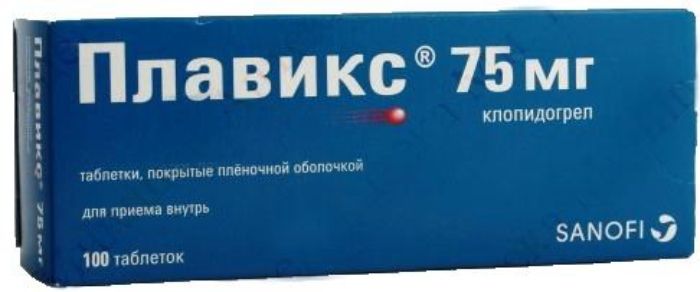

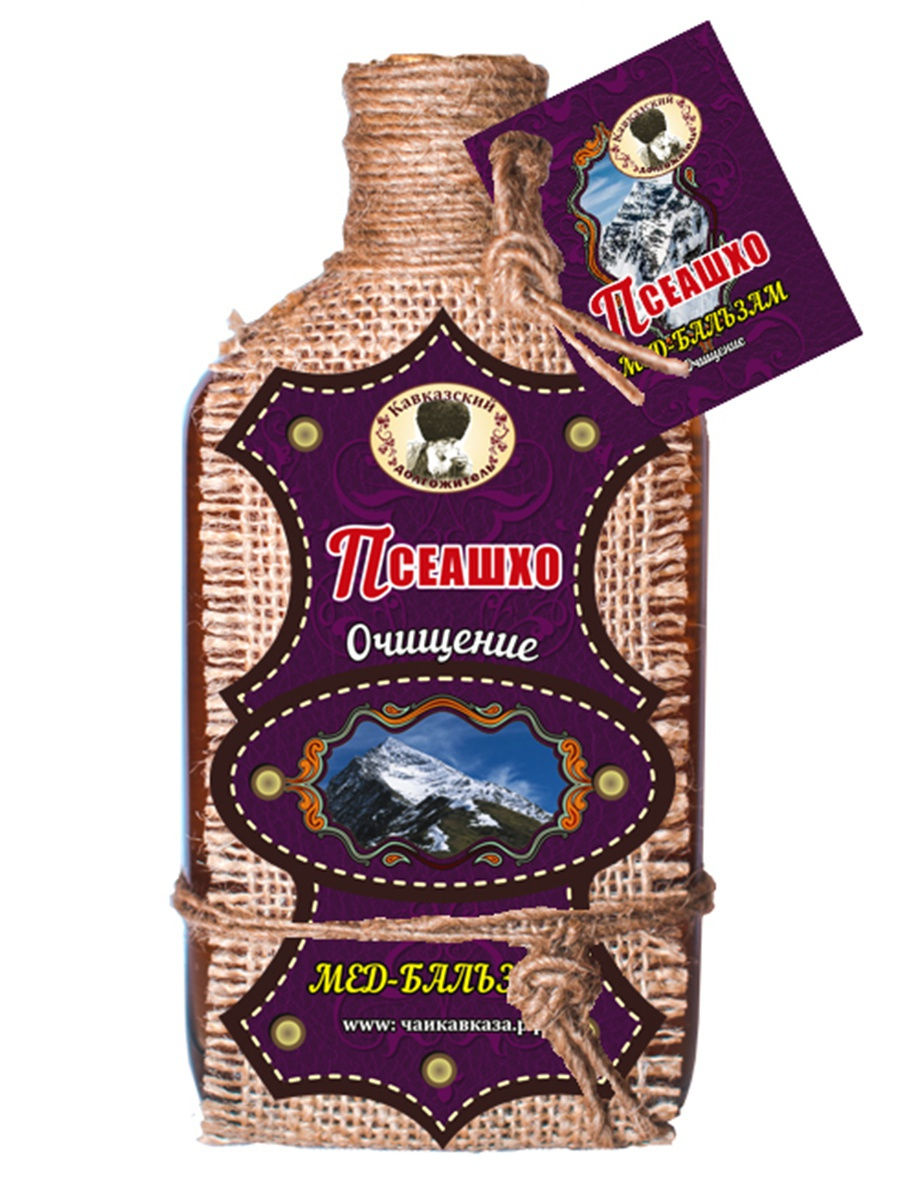

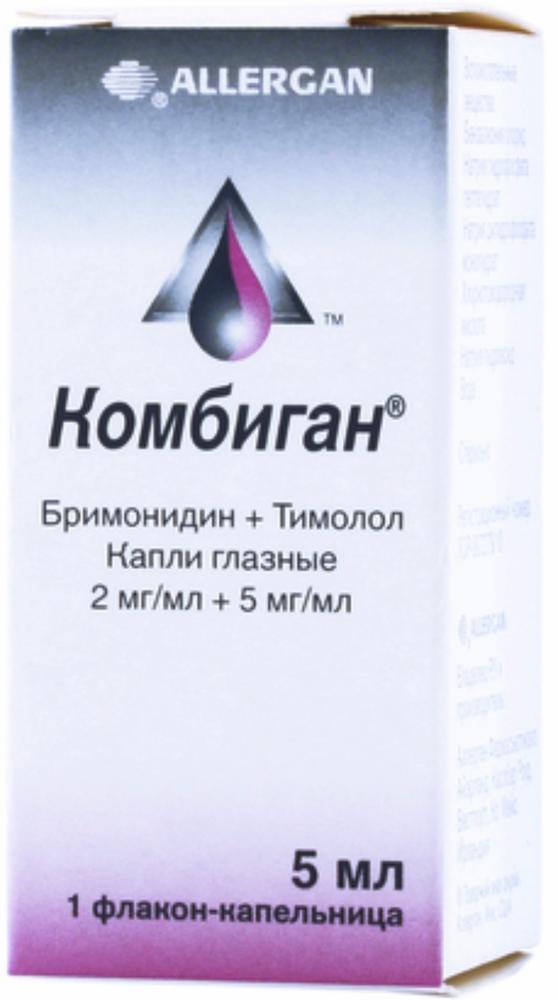
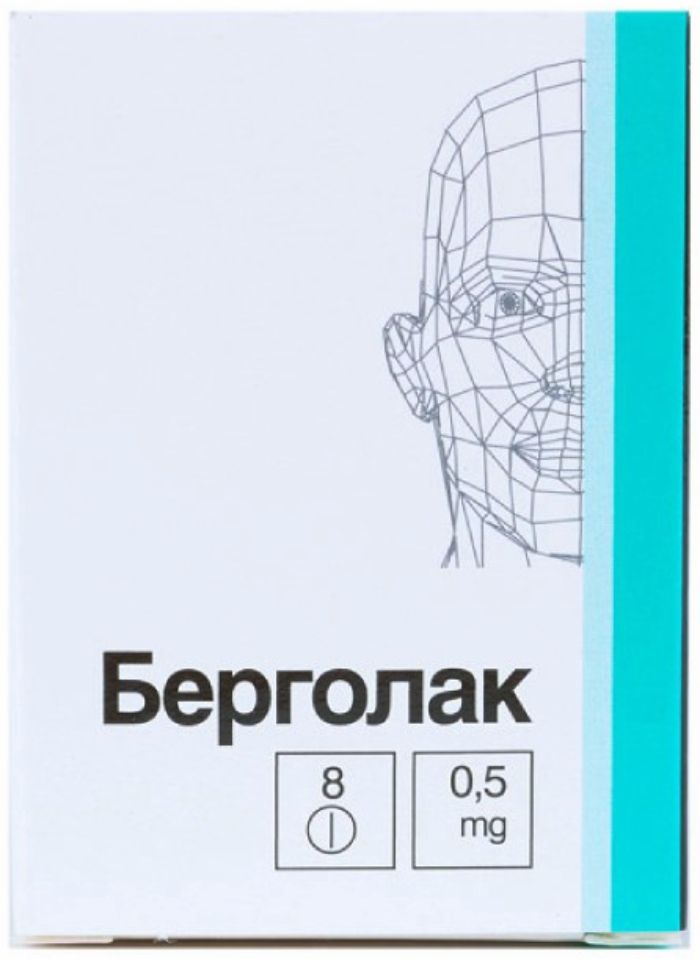
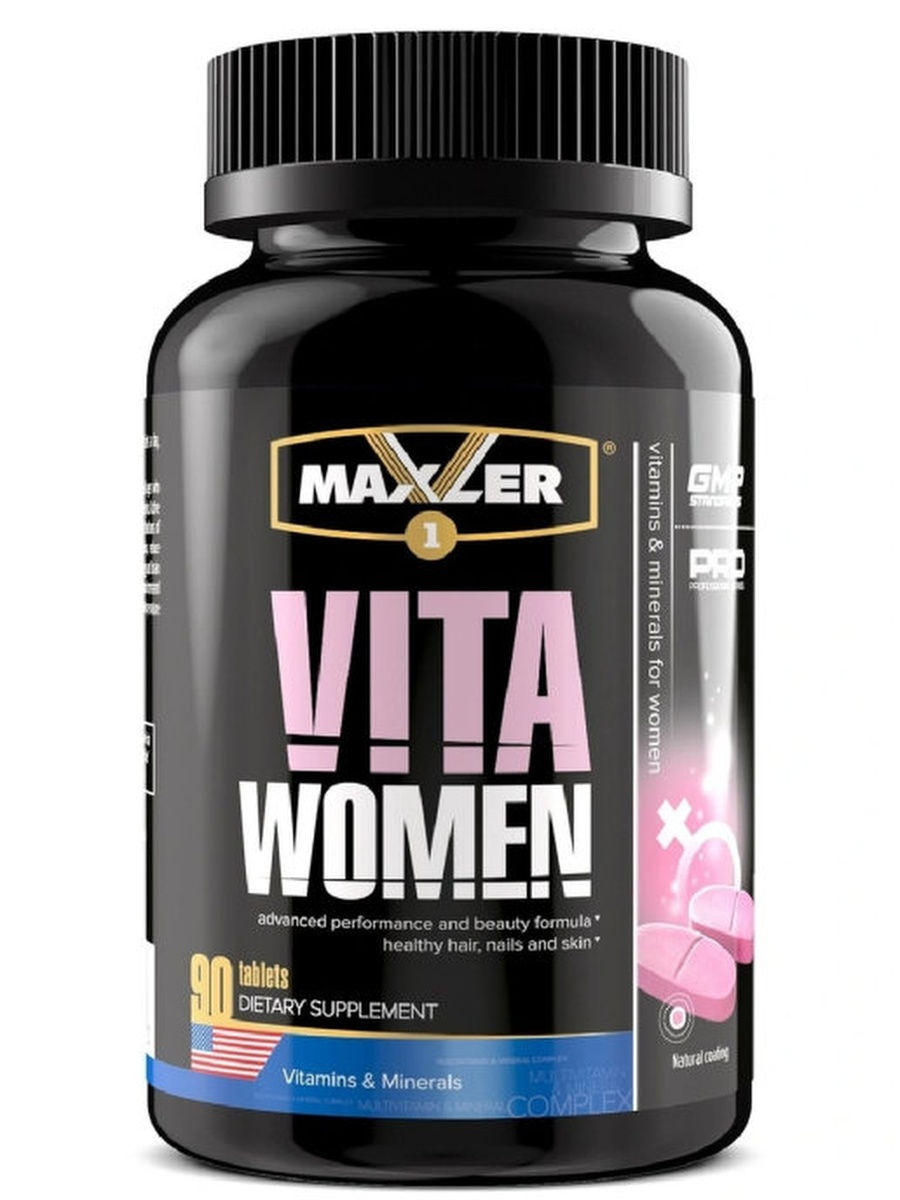




There are no reviews yet.